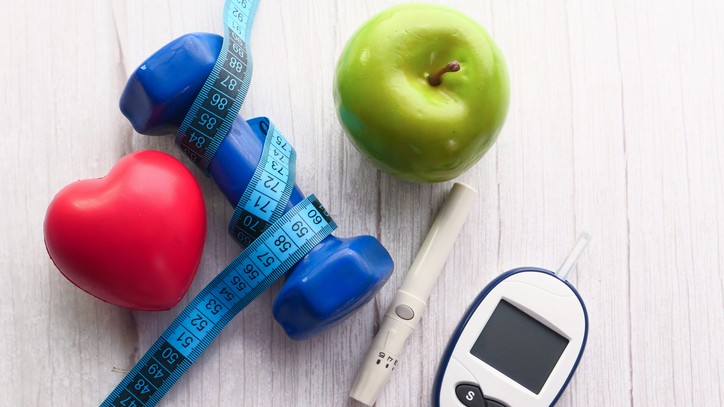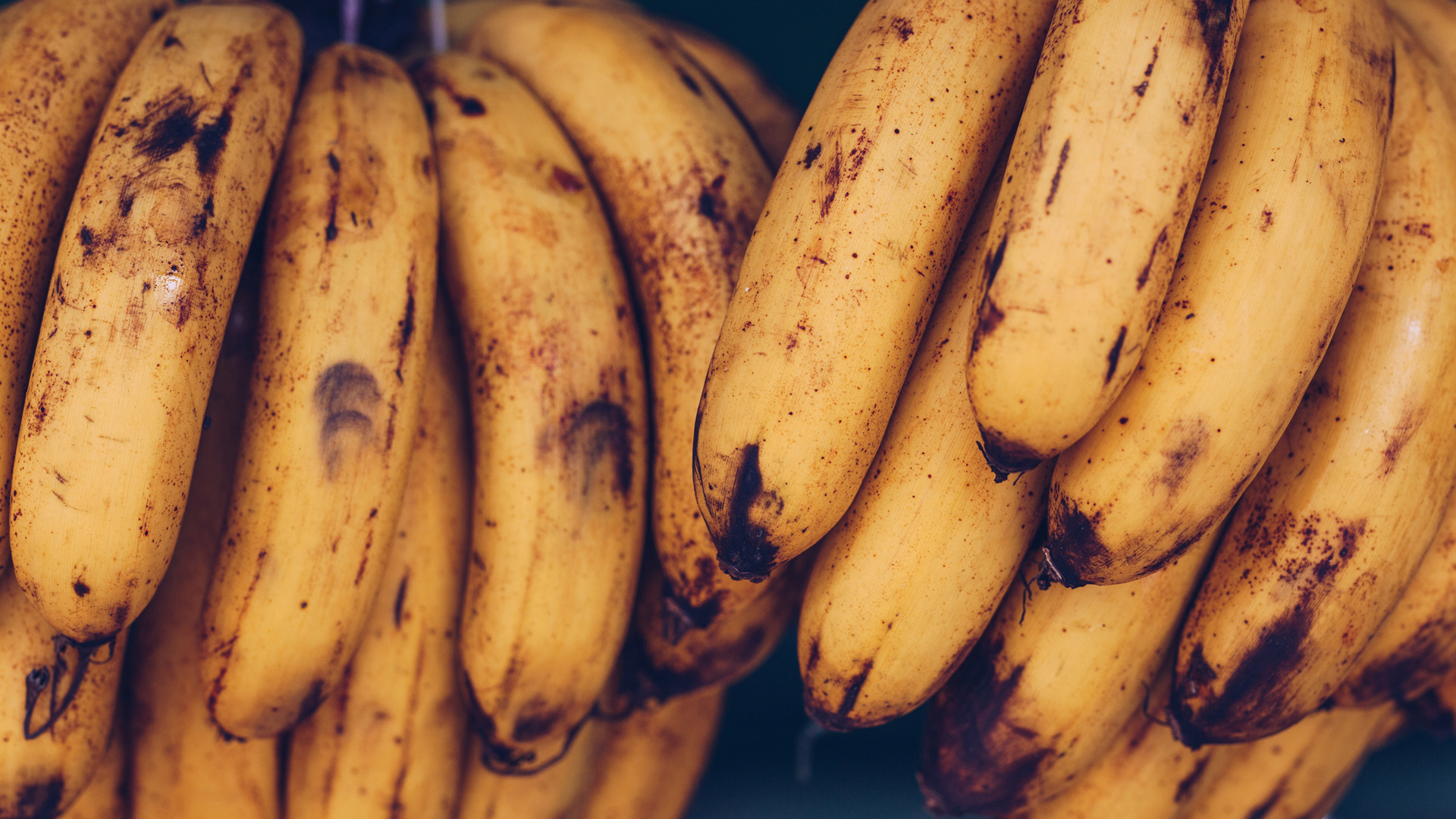Which fruits are good for diabetics?
Our guide to which fruits are good for diabetics will help you to choose what to eat more of, and what to avoid

If you’ve been wondering which fruits are good for diabetics, you’ve come to the right place. Lots of people think that diabetics need to steer clear of all sugars, even the sugars found in fruit. You may be surprised to learn that this is a myth, and in fact many fruits can be a healthy and nutritious part of your diet, whether you have diabetes or not.
A wide variety of fruits can help you to manage your blood glucose levels, reduce fat in your diet, lower your blood pressure and help you manage your weight – all of which can improve the symptoms associated with diabetes. It is, however, worth being aware of which fruits are low in sugar.
That’s because any foods that contain carbohydrates tend to raise blood sugar levels and fruits fall into that category. But that doesn’t mean cutting fruit out of your diet completely. While diabetics should avoid foods and fruits that contain a lot of sugars, there are plenty of low-sugar options that make a nutritious addition to a diabetics diet.
We do, however, recommend that you opt for whole fruit and steer clear of fruit juice. Fruit juices can be higher in natural sugars, and you can drink more than you need, so they can raise your blood glucose level quickly. Instead, think about swapping fruit juices for water. Our guide to the best water bottles will help you find the perfect water bottle for sipping from, while you’re out and about.
To help you figure out which fruits are good for diabetics and which ones to avoid, we’ve compiled a handy list for you in this guide, plus, we share our top tips for managing diabetes with your diet.
Fruits to include in your diabetes diet
Paying close attention to the glycemic index (GI) of the fruits you’re wanting to consume is one way that you can keep track of which ones may raise your blood glucose levels. Foods with a high GI rating can cause a rapid increase in blood sugar levels, including sugary foods and drinks, white bread, potatoes and white rice.
Fruits, on the other hand, usually have a low or medium GI rating. This means they are broken down gradually, causing a slower rise in blood sugar levels over a longer period. They’re also great for satisfying a sweet tooth.
Get the world’s most fascinating discoveries delivered straight to your inbox.
If you aren't a fan of fruit, you can also see our guide to the best vegetables for diabetics.

According to the American Diabetes Association, fruit is a healthy part of any diabetes meal plan. The ADA recommends any fruit that is fresh, frozen or canned.
If you’re choosing canned fruit, make sure you avoid varieties that have added sugar. Look for descriptions that say “unsweetened,” “no added sugar” and “packed in its own juices.” Don’t buy fruits that are packed in sugary syrups.
Dried fruit can also be nutritious but beware of eating too much. Just 1 miniature box of raisins can contain as much as 14g of carbohydrates. If you’re not sure, it’s better to stick with whole fruits. They’re more filling than dried varieties too.
People with diabetes should aim to eat the same recommended number of servings per day as people without diabetes. That means around 1.5 to 2 cups of fruit every day, according to the Centers for Disease Control and Prevention.
The ADA recommends the following fruits to include as part of a diabetes meal plan:
- Apples
- Apricots
- Avocado
- Blackberries
- Blueberries
- Cantaloupe
- Cherries
- Grapefruit
- Grapes
- Honeydew melon
- Nectarine
- Peaches
- Pears
- Plums
- Raspberries
- Strawberries
- Tangerines
Fruits to avoid in your diabetes diet
There are some fruits that have a medium to high GI rating, which means they could raise blood glucose levels faster than other fruits.
This doesn’t mean that people with diabetes should avoid eating these fruits per se, but they may want to limit them in their diet. They may also want to carefully monitor their blood sugar levels after eating certain fruits.
According to Medical News Today fruits that have a high GI include:
- Overly ripe bananas
- Watermelon
- Dried dates
- Pineapple
GI rating can also increase as the fruit ripens.

Other tips for managing diabetes with your diet
According to the National Institute of Diabetes and Digestive and Kidney Diseases (NIKKD), a healthy diabetes diet includes the following foods as well as fruits, in portions that your meal plan recommends:
- Vegetables: non-starchy veg such as broccoli, carrots, peppers, and tomatoes, and starchy veg such as potatoes, corn, and green peas.
- Whole grain bread, pasta, and cereals.
- Lean meats and fish or meat substitutes, such as tofu.
- Eggs.
- Nuts and seeds.
- Non-fat or low fat milk, yogurt, and cheeses.
- Foods with heart-healthy fats, such as olive oil, avocado, and fatty fish.
NIKKD also recommends portion control when it comes to mealtimes, especially for people with diabetes who are overweight. There are two methods to help you reduce the amount you’re eating at mealtimes:
- Plate method: Using a 9” plate, fill half the plate with non-starchy vegetables, a quarter with meat or protein, and another quarter with a grain or starch.
- Carbohydrate counting: This is often used by people with diabetes who take insulin. You’ll need to learn which foods contain carbohydrates and how much is in each portion size. Then you’ll need to add up how many carbohydrates you have over the course of a day.
Both these portion control methods can help you to plan out how much to eat and how much of each food group to have, including fruit. A diabetes health care team can advise on which method is right for you.
Fast ways to include more fruit in your diet
These simple tips from the American Heart Association can help you to pack more fruit into your everyday diet with ease. Just making one simple switch to a meal or snack can increase nutrition, help you lose weight, and manage your blood sugar levels more effectively.
- Add a handful of fresh, frozen or canned berries to your morning cereal or porridge.
- Use chopped orange, grapes or melon to your lunchtime salad.
- Keep a serving or two of fruit handy as a snack during the day.
- Freeze a banana or a slice of watermelon for a cooling popsicle in the summer months.
- Opt for fruit as a dessert course to satisfy a sweet tooth.
References
American Diabetes Association. (2022). Fruit | ADA. Retrieved April 22, 2022, from https://www.diabetes.org/healthy-living/recipes-nutrition/eating-well/fruit
American Heart Association. (2021, January 21). How to Eat More Fruit and Vegetables. Heart.org. Retrieved April 22, 2022, from https://www.heart.org/en/healthy-living/healthy-eating/add-color/how-to-eat-more-fruits-and-vegetables
CDC Newsroom. (2016, January 1). CDC. Retrieved April 22, 2022, from https://www.cdc.gov/media/releases/2017/p1116-fruit-vegetable-consumption.html
Fletcher, J. (2021, March 30). What are the worst fruits for someone with diabetes? Medical News Today. Retrieved April 22, 2022, from https://www.medicalnewstoday.com/articles/worst-fruits-for-diabetics
Link, M. R. S. (2020, June 2). Glycemic Index: What It Is and How to Use It. Healthline. Retrieved April 22, 2022, from https://www.healthline.com/nutrition/glycemic-index
National Institute of Diabetes and Digestive and Kidney Diseases. (2021, December 9). Diabetes Diet, Eating, & Physical Activity. Retrieved April 22, 2022, from https://www.niddk.nih.gov/health-information/diabetes/overview/diet-eating-physical-activity#whatFood
Joanne Lewsley is a UK-based freelance writer and editor, covering health and lifestyle news and features. She mainly creates evidence-based health and parenting content and has worked with a number of global sites, including BabyCentre UK, Medical News Today, Fit & Well, Top Ten Reviews, and Yahoo!



